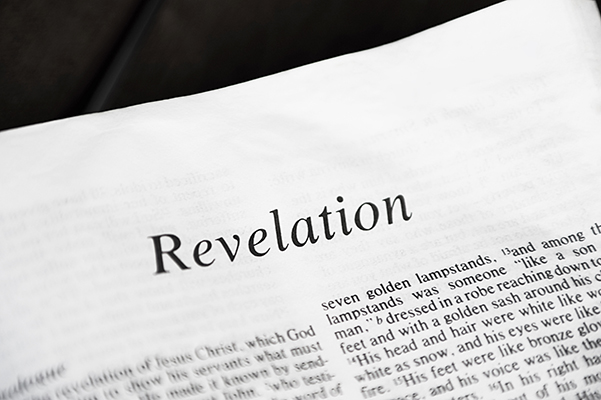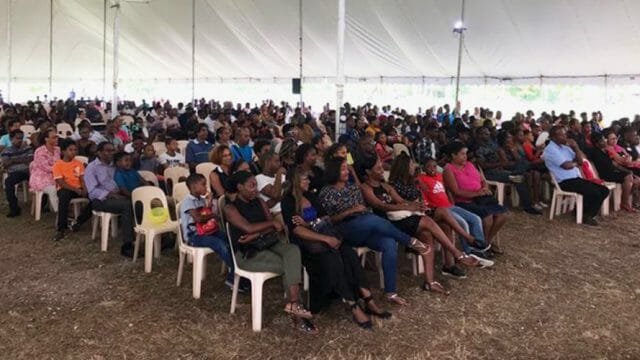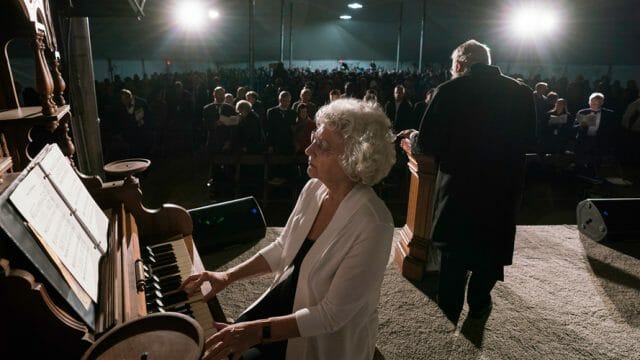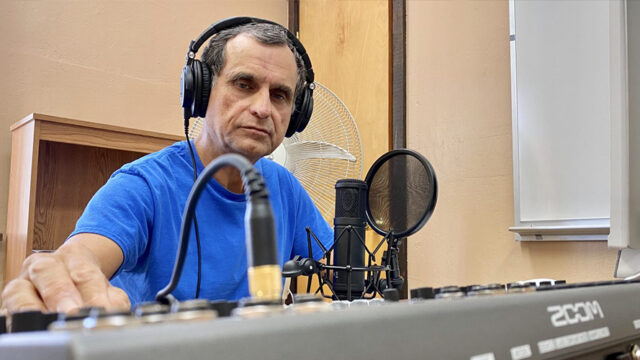Telling the difference between the end and merely a terrible crisis

It’s no secret that COVID-19 has managed to make 2020 a time of great loss, fear, and frustration. It’s also no secret that the physical threat of the virus, together with its global economic and social consequences, have left thousands asking: Is the world beginning to unravel? Is the end of all things near?
These are important questions. And, blessedly, many answers given publicly in response to them have been biblically sound. But other answers—including some that have found receptive audiences in Adventist churches—have, in my estimation, missed the mark. These answers seem to come in one of three flavors:
Three Takes on COVID
COVID-19 has nothing to do with the end of the world. Those who support this answer often cite misguided “prophetic” speculations of the past (and, sadly, there are many to cite). Because of these failures, they believe that any conjecture on the end of the world inevitably leads to fanaticism and is therefore unconducive to genuine spiritual growth. Some even go so far as to say that prophecy in general is a distraction during a time of crisis and should be ignored in favor of focusing on compassion for those in need.
But compassion is not in conflict with Bible prophecy—at least when Bible prophecy is rightly understood. The same God who inspired the words, “Carry each other’s burdens” (Gal. 6:2),1 also said, “Therefore keep watch, because you do not know on what day your Lord will come” (Matt. 24:42).
Furthermore, to fail to see any prophetic implications in something like COVID-19 is a difficult position for Seventh-day Adventists to maintain, for both the Bible and the writings of Ellen White clearly draw the opposite conclusion. Jesus Himself promised a blessing to those who take prophecy seriously (see Luke 12:37; Rev. 1:3). So, while I can sympathize with this first answer to, “Is the end of the world near?” it is a difficult answer to support.
COVID-19 is a clear sign that the end of the world is now. This second group clearly comprises those at the opposite end of the spectrum from the first group. They look at the COVID-19 crisis and see it as a clear sign of the imminent, immediate, happening-within-just-a-few-months return of Christ. They cite the scope, intensity, and deadliness of COVID-19 to support their claims, and particularly focus on the apparent loss of religious liberty vis á vis government restrictions on travel and assembly. These are prophetic smoking guns, they contend, and Jesus’ return is thus exceedingly near—even at the door.
COVID-19 is a clear prophetic sign of, um, well, we’re not exactly sure.This third group is middle-of-the-road compared to the first two. But they are unfortunately not in the middle of that road for good reasons (in my opinion). They do sense that the COVID-19 crisis has prophetic significance. But what exactly that significance is, they’re not too sure—and more telling, they’re not terribly motivated to study and find out. Instead, they take an almost casual, wait-and-see attitude. “Jesus’ second coming is not ‘at the door,’” they say in essence. “It’s more like He’s, well, still in the driveway—and it’s possible that He’s in no particular rush to get out of His car. So we’ll wait to get more spiritually serious until things start to heat up.”
Four Considerations
As one might imagine, vocal commentators from all three groups have led to conflicting messages both within the church and outside it. And a conflicted witness is rarely good, particularly when a crisis like COVID-19 is dominating headlines and the lives of millions of people.
How can we address this problem? How can we not only accurately assess the prophetic import of the current crisis, but tell the difference between: (1) genuinely very-end-of-time events—let’s call them “VET” events for short—that mean Christ could be coming exceedingly soon; and (2) events that have true prophetic importance, but are not yet VET-level?
To I answer this question effectively, I suggest asking four additional questions:
What is the true size of the current crisis? During most of the initial buildup of the pandemic, New York City dominated headlines in the United States. And no wonder: it was the epicenter of COVID-19 cases, with more people testing positive than in any other location in the nation.2 Governor Andrew Cuomo, facing the greatest challenge of his career, gave daily news briefings, trying to give direction and hope to his citizenry—and if we’re honest, to the onlooking world.
There’s no doubt that what happened in New York City has been catastrophic, tragic, and devastating for tens of thousands of people. Understandably, some New Yorkers—as well as some Washingtonians, Italians, and scores of others who’ve suffered terribly around the world from COVID-19—have looked at their catastrophic local circumstances and determined that, yes: Jesus must be coming very, very soon.
Such sentiments are completely understandable. Which of us hasn’t had similar sentiments when we’ve experienced profound trauma? Our brothers and sisters in New York City and elsewhere needed (and many still need) our financial, social, and spiritual support. With them we pray that the virus is under control.
But that said, we must also concede an important point: making sweeping prophetic conclusions based on local (city, state, even national) conditions ignores the emphatically global nature of VET-level events. New York City is an extraordinarily influential place. But the Bible’s descriptions of events at the end of time easily surpass even its megalopolis proportions. Events at the end of time will affect “the whole world” (Rev. 13:3), and all who are living “on the earth” (verse 8). Consequently, a horrific day (or month or year) in one city (or many) does not equate to the immediate ending of all the world.
In fact, massive swaths of the global population have had no negative health consequences from COVID-19. As I write, the confirmed number of COVID-19 cases globally is just over 10.2 million,3 a large number. But with a total world population of about 7.8 billion, it is a mere .11 percent of all humanity.4 By itself, COVID-19 is simply not—at least not yet—big enough to be considered a true VET-level event.
What is the global level of desperation? What if COVID-19 were to spread exponentially? Even then, its size alone could not make it a VET-level event. The 1918 flu pandemic, World War I, and World War II, for example, each involved much of our planet’s population and geography. But those events did not usher in the second coming of Christ—nor could they. Why not?
One reason is that those events did not bring an adequately high sense of desperation to the vast majority of the world’s population.
According to prophecy, much of the planet at the end of time will have been decimated by both disease and supposedly “natural” disasters (See Matt. 24:7; Luke 21:10, 11, 25, 26; Ellen G. White, The Great Controversy, pp. 589, 590).These events will lead to global chaos, famine, fear, and intense political/military conflict. One of the cumulative results of this will be that on a global scale “people will faint from terror, apprehensive of what is coming on the world” (Luke 21:26). In other words, most of the world will become deeplydesperate. And when people are desperate, they will give almost anything to the person or organization that claims to be able to save them.
Most every Adventist knows about the VET-level scenario of not being able to buy or sell (see Rev. 13:16, 17). But many Adventists forget that multitudes at the end of time will not need to be forced into that scenario; they will willingly choose it. For it will appear to them that only the beast power can withstand the powerful human and natural forces that are destroying the earth(see Rev. 13:4).
Has the COVID-19 crisis generated this level of desperation on a global scale? Most rational assessments would say no—at least not yet. Of course, the medical, social, and economic fallout from COVID-19 remains a serious threat. It could still lead to VET-level events (thus, we must keep watch). But as of this writing, COVID-19 desperation has not yet reached VET levels.
Does the crisis specifically involve religious liberty? Now we’re nearing the heart of the matter. This is the pivot on which true VET-level events turn. In fact, it’s no exaggeration to say that if a crisis is not clearly and tangibly impacting religious liberty on a very broad scale, then no matter how terrible, deadly, or cruel it may be, it is not—at least not yet—a VET-level crisis.
World War II was a massive event with global consequences. But it never became, nor was it ever intended to be, a war over religious liberty.5
By contrast, Bible prophecy is clear that genuine VET-level events will have one ultimate goal: to have every person on the planet answer once and for all time the question, “Whom will I worship: Christ? Or Satan?” (see Rev. 13:8; 14:7). For his part, Satan will try to force the worship of himself by dissolving the separation between church and state. In the process, religious liberty will be eradicated (See Rev. 13:4, 7, 16, 17). By this stark standard, COVID-19 falls well short of being a VET-level crisis.
But wait! you might be thinking. What about the fact that in many parts of the world governments have made it illegal for church buildings to be used by Christians in ways they’re used to; and in some cases, prohibited church-building use at all? If there was ever clearly a religious liberty issue, surely this is it, right?
It’s true: untold thousands of church buildings all over the world were (and many still are) shut partially or completely because of COVID-19. But several factors tend to dial back the religious liberty threat this represents.
First, untold thousands of buildings besides churches have also been shut down for health reasons. In other words, churches are hardly being targeted specifically.
Second, the closures are, by all accounts, temporary. As the virus dials back, churches will again open up.
Third, the practice of religion in general remains as legal in most of the world’s countries as it was prior to the pandemic. Most Adventists—at least in the Western world—can still openly worship God, follow their convictions, pray, study the Bible, etc., all without fear of government suppression.6
Again, I don’t disagree that the COVID-19 crisis could morph into a religious liberty crisis of global proportions (for instance, if what happened in Kansas City, Missouri, and a handful of other places became far more enduring and widespread).7 But as of this writing, the situation is simply not, in my assessment, up to VET levels yet.
Does our crisis assessment consider “the list”? Variable, controversial, but with a reasonably solid core, “the list” is my term for an itemization of the VET-level events predicted in the Bible and the Spirit of Prophecy. Adventist scholars and lay members alike have debated “the list” for decades. Throughout the years, it usually contains something like the following:8
- Nature unravels on a global scale (Matt. 24:7; Luke 21:10, 11, 25, 26; Ellen G. White, The Great Controversy, pp. 589, 590).
- Wars, famines, pestilence reach a fevered, global pitch (Matt.24; Luke 21).
- Religious liberty is obliterated, first in the United States, then globally (Rev. 13).
- Sealing of God’s people (Rev. 7).
- Latter rain of the Holy Spirit (Rev. 18).
- Shaking of God’s people (Amos 9:9; Luke 22:31, 32; Rev. 3:14-22).
- Gospel goes global (the loud cry: Matt. 24:14; Rev. 18).
- Rise of global deception via spiritualism (Rev.13:13; 16:12-14).
- Roman Catholicism/Protestant America/Spiritualism unite for global persecution (Rev. 13; 16:12-14; 17).
- Early time of trouble (Luke 21:25, 26).
- Mark of the beast, global Sunday laws (Rev. 13:14-17; 14:7, 9-11, etc.).
- Probation closes, time of trouble, seven last plagues (Dan. 12:1; Rev. 8, 9, 15-18).
- God’s people delivered, the second coming of Christ (Rev. 1:7; 19).
There is much to discuss and debate regarding “the list.” But whether one agrees with all I’ve placed in it or not, one thing ought to be clear: when we’re speaking of the very end of time and the imminent return of Christ, much more than a global pandemic has to be in play. There are other, solidly biblical, Spirit of Prophecy-based events that must be considered before drawing hard and fast conclusions on the nearness of the end of the world.
Let’s Keep Watch!
Given all the above, I believe that COVID-19 is a general sign of the coming end of the world, but not a sign of the immediate end of the world. In other words, it’s not yet a VET-level event. Jesus clearly said that increasing “pestilence” (or disease, which COVID-19 obviously is) is an example of “the beginning of birth pains” at the end of time, not the very end of time itself (compare Luke 21:11 with Matt. 24:7, 8).
None of what I’ve written should be understood to say that Jesus cannot come soon. On the contrary, we are told that the final events—the VET-level events, if you will—will be swift ones (see Matt. 24:8; Rev. 22:20; Ellen G. White, Testimonies for the Church, vol. 9, p. 11).
True, COVID-19 has been a terrible reality for millions of people. But Seventh-day Adventists ought to look at “the end” differently from others who have less information. We must see this pandemic—and all other end-time events—in the light of well-studied Bible prophecy. We cannot afford to create false excitement through a flawed understanding of end-time events; nor can we lapse into apathy because we’re willfully ignorant of basic prophetic truths.
Let’s instead keep our eyes firmly on Jesus, while becoming as skilled as possible in interpreting the signs of the times.
1 All Bible texts are from the Holy Bible, New International Version. Copyright ã 1973, 1978, 1984, 2011 by Biblica, Inc. Used by permission. All rights reserved worldwide.
2 At one point, if New York City were a country, it would have ranked seventh globally in the number of COVID-19 deaths. See www.perugazette.com/2020/05/25/city-state-new-york-may-25th-update/ and www.worldometers.info/coronavirus/#countries.
3 www.worldometers.info/coronavirus/ (accessed June 20, 2020).
4 Some may insist that there could be millions more undiagnosed or unreported COVID-19 cases. But the point still stands: it would take massively greater numbers of positive cases to even begin to approach VET-levels.
5 True, Hitler spoke frequently about religion in general and Christianity in particular as justification for the rise and aims of the Nazi party. But history is also clear that this was merely a ploy to persuade nationalistic Christians to go along with his “final solution.” Hitler hated Christ and Christians and pursued Nazi hegemony on nationalistic and racial lines rather than religious ones.
6 Though until COVID-19 passes, perhaps not in a church building. Which brings up an interesting aside: what the apoplexy church closures have induced in some Adventist commentators may say more about an unhealthy dependency than it does about religious liberty. In the last 100 years, Western Adventism has become extremely dependent on church programming centered in and around church buildings. This is ironic given the fact that for most of the first 300 years of Christianity, Christians generally had no buildings of their own to meet in. Yet the church then grew at a far more rapid pace than the church of today. Far from being a true religious liberty crisis, COVID-19 may have revealed that we are far too dependent on the machinery of Christianity, and not nearly dependent enough on Christ. We have let church programs in church buildings take the place of our vibrant, personal witness—a witness that no COVID-19 restriction could squelch.
7 Kansas City, Missouri, and Mayor Quinton Lucas’s attempt to require churches to record all attendees and turn that list over to city officials rightly alarmed religious liberty advocates. But such a practice would have to become national before it could be considered a potential VET-level event, since the United States is predicted to remove its citizens’ religious liberties as a precursor to stifling religious liberty globally. (The outcry against Mayor Lucas’s proposal was so great that he reversed the requirement the day after it was announced. See www.westernjournal.com/kansas-city-now-allows-religious-gatherings-requires-records-attendees/ .)
8 In addition to the content, the order of the list can vary. Some items can overlap chronologically with others.








